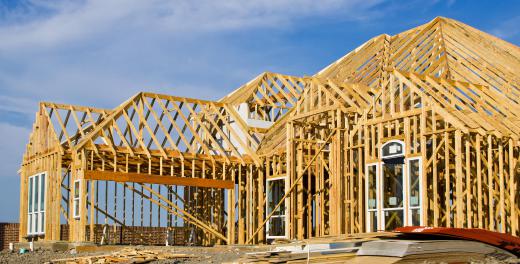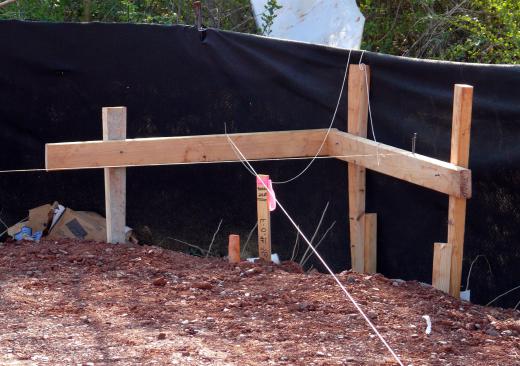A platform frame is part of a method of constructing a building where each floor is separate from the floors below it. When the building is built, the platform frame for a floor is placed, and then the wall frames are placed on top of it. The next floor’s walls are placed on top of a second platform frame that sits on the first story’s walls. This building method is in contrast to balloon framing, where the outer walls, and occasionally inner, are made of long, continuous beams that run from the ground to the roof. Platform framing is commonly used on residential or small commercial structures that have more than one floor.
Regardless of the type of framing used, the first part of a house is the foundation. This is typically a concrete slab that is slightly larger than the footprint of the house. In houses with basements, the foundation will often make up the basement’s floor. In houses without basements, a space is made between the foundation and the first floor that helps prevent rot and creates an insulating barrier between the ground and the building. This will usually result in a crawlspace.

When a building has a platform frame, the first platform sits on top of small support beams connected to the foundation. These platforms are made the same way as the walls of the house, simply lying on their side. The platform is usually covered in plywood to create a solid surface for connecting walls and flooring.
The wall frames sit on top of the platform and extend to ceiling-height. The next platform is placed on top of the walls in the same basic manner that first platform is placed on the foundation supports. The next floor sits on top of the second platform and so on to the top of the building.

This method has mostly replaced balloon framing in North America. With balloon framing, the walls are built on top of the foundation and extend to the roof. The floors are suspended and nailed into place at the correct points. Each floor is basically floating within the cylinder created by the walls. This construction method was more common in the past, when large and long pieces of wood were more common.
Buildings made with a platform frame generally don’t have any external characteristics that set them apart from other buildings. Balloon-framed buildings, particularly those with brick outer walls, will have external plates, supports or connections where the floors intersect the frame. These external systems provide additional support to the building’s floors and make it less likely that the outer wall will collapse.
